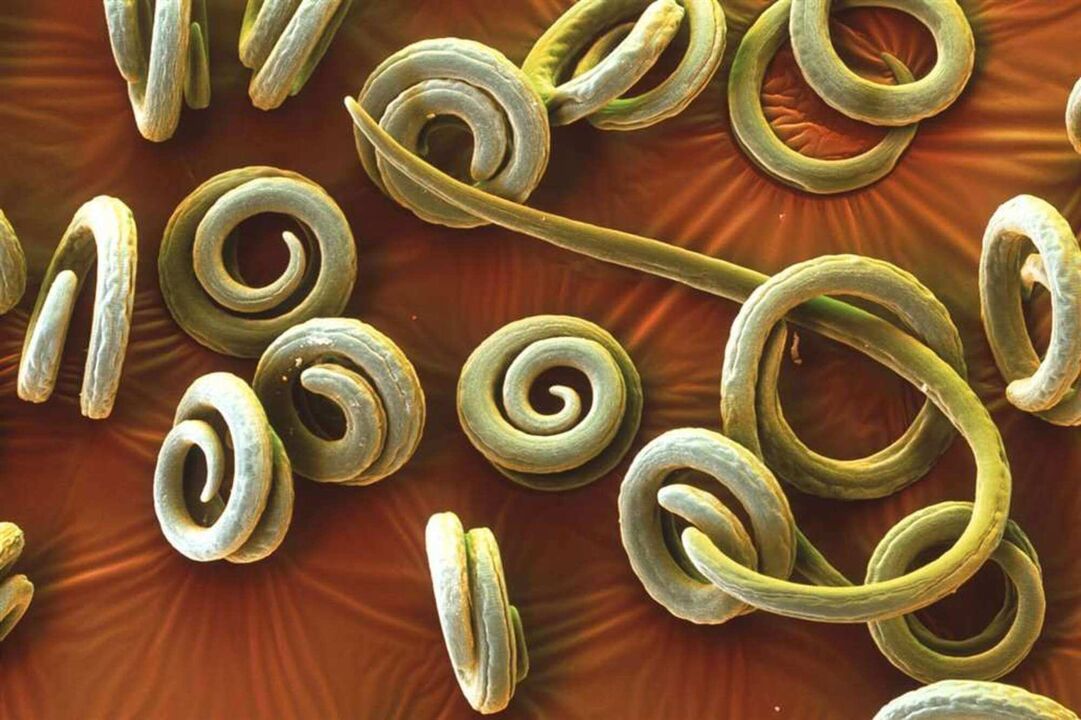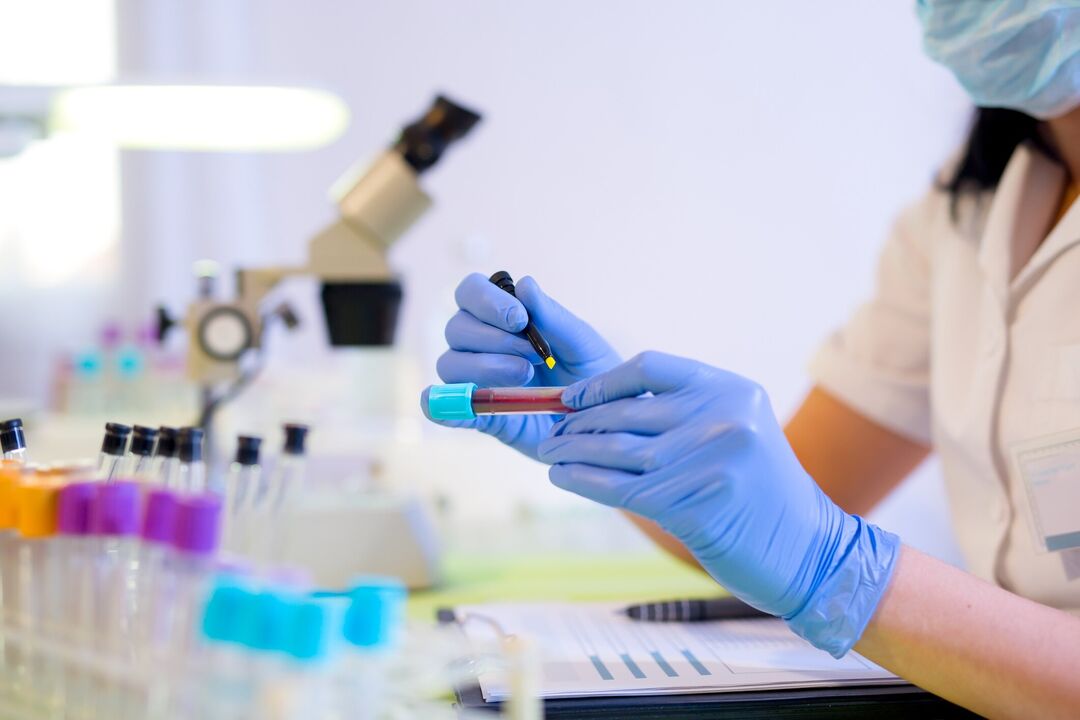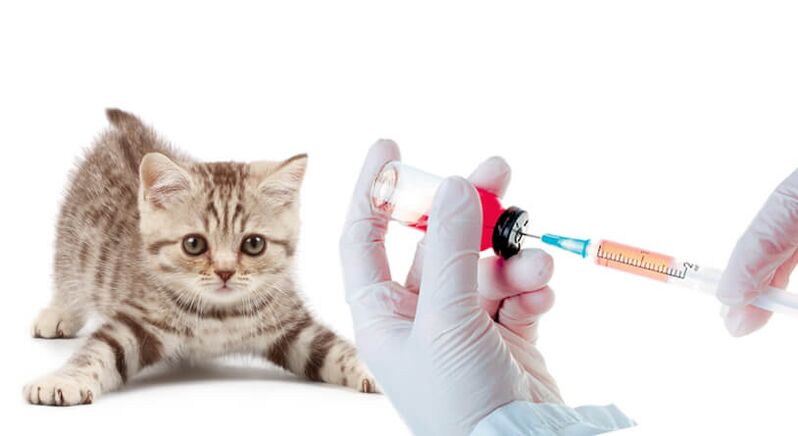There are about 250 types of worms that threaten the health of an adult. As a result of infection with parasitic worms, helminthiasis develops. The vital activity of worms in the internal organs can cause severe allergies, anemia, pancreatitis. All age groups of the population are susceptible, but infection rates are higher in children.

Most worms live inside the body, only they lay eggs and die after a certain time.
Types of parasitic worms and their development characteristics
Depending on the mode of distribution, main groups of parasites are distinguished:
- biological worms. In the process of going through the entire development cycle, several owners are replaced. These include tapeworms, roundworms, and echinococci.
- Geohelminths. Capable of spreading without an intermediate host, but through soil. A person becomes infected by eating unwashed vegetables and fruits. The main representatives: roundworms, roundworms, filariasis.
- Worms are transmitted by contact with an infected person. This group includes pinworms and dwarf tapeworms.
More than 150 species of helminths registered in humans are known.
Parasites also differ in their location in the body:
- tissue affecting internal organs and tissues that make up their composition;
- live in the intestinal lumen, absorbing the nutrients necessary for a person.
In terms of appearance, helminths are divided into 3 groups:
- roundworm;
- flatworms;
- flukes.
Methods of infection with helminths
In most cases, the parasite enters the host's body in the following ways:
- The larvae or eggs, along with feces, end up on the soil or in the water, infecting humans by eating unwashed food or live liquids. During the summer holidays, the possibility of erosion through water bodies increases.
- Due to contact with sick people or shared objects. This mode of distribution is typical for pinworms. At night, the female leaves the anus and lays eggs. This process causes intense itching, so the eggs remain on hands and underwear. Then they fall in love with a healthy person.
- Tapeworm infections occur when raw and poorly cooked meat is eaten. Tapeworms of this species infect the muscle tissue of intermediate hosts, including cattle and pigs.
- Insects can carry eggs and larvae of worms on their limbs, increasing the potential for infection.
The life cycle of most parasites includes the release of a huge number (millions) of eggs, which enter the human body, which after a certain time turn into larvae.
The growth of parasites in the human body can cause acute and chronic forms of disease. The acute form is characterized by pronounced symptoms and persists for up to two months. Chronic invasiveness can be observed throughout a person's life if left untreated.
The main types of helminths that parasitize humans
Each form of microorganism is characterized by a lesion of a certain organ and corresponding symptoms. However, all parasites are united by the method of obtaining nutrients - at the expense of the host organism. At the same time, a person's metabolism is disturbed, anemia and other diseases develop.
There are different types of helminths:
- Roundworms are large white roundworms up to 20 cm long, adults live in the small intestine, larvae can move through the circulatory system to the lungs. They belong to helminths, infections that occur when consuming unwashed vegetables, fruits and water. Parasite eggs also accumulate in the sand.
- Pinworms are small worms that are visible to the naked eye after having a bowel movement. Distribution zone - the lower part of the small intestine. Under the influence of parasites, filariasis is formed. The cause of infection is contact with unhealthy people. It is very common in children under 14 years of age.
- Tapeworms. These include beef and pig tapeworms, and broad tapeworms. They are distinguished by their ability to rapidly increase in population, thanks to her hermaphrodite. Their bodies are made up of many parts, contain a reproductive system and thousands of eggs. Depending on the type of parasite that forms different diseases. Localized in the small intestine, damaging the mucosal epithelium. Builds up in the intestinal lumen and can cause obstruction. Infection occurs when eating undercooked beef, pork or fish.
- Vlasoglav - a roundworm that looks like a hair with a thickened back. Due to the peculiarity of the structure, it penetrates the blood vessels and feeds on tissue fluid. Lack of treatment leads to a decrease in the body's resistance to infections and cancer. The source of the infestation is unwashed products.
The insidiousness of helminthiasis lies in the fact that it successfully disguises itself as other diseases.
The development of the parasite from an egg to a sexually mature individual occurs within three weeks. During this stage, symptoms may be absent or present in mild form. If left untreated, the vigorous reproduction of worms will lead to the disease becoming chronic.
Signs of a helminth infection
The main symptoms of a worm infection are manifested in the form of:
- weakness and fatigue;
- pain in the intestines;
- constipation alternating with diarrhea;
- swelling on the face or all over the body;
- inflammation of the lymph nodes, cough and choking;
- an itchy skin rash;
- pain in the joints.
The topic of parasites is unpleasant and scary, and many myths about these harmful creatures have arisen.
The consequences of a worm infection are often disguised as other diseases. The difference between the pathologies lies in the specific signs of disturbances in the functioning of the body. Depending on the type of helminth, there may be:
- increased salivation, a slight increase in temperature, urticaria with ascariasis;
- frequent urination, sleep disturbance, pain in the navel when infected with pinworms;
- nausea, vomiting, pale skin, low blood pressure when infected with tapeworms;
- yellow sclera, dizziness, heaviness in the liver, pain all over the body in case of worm infestation.
It is important to detect worms promptly with the help of tests and to apply effective treatment.
The symptoms of helminthiasis directly depend on the type of parasite, its location in the body, and the intensity of the infection.
Material sampling method to detect intestinal parasites
The main analysis that allows you to accurately diagnose the presence of worms is the study of feces. The material is delivered to the laboratory in a sterile container on the day of collection. The use of laxatives and urine penetration on the material are unacceptable. The litter box needs to be stored in the refrigerator at 4-5 degrees until it is sent to the laboratory.
In addition, the following tests may be ordered:
- immunological testing;
- blood and urine analysis;
- shaving from the vagina in women and girls;
- check sputum in case of cough;
- Ultrasound and endoscopy;
- secret analysis.

The ELISA blood test is an effective way to detect helminths in the body.
A person can be infected with one or more types of helminths. As a rule, the presence of single individuals in the body is characterized by the absence of symptoms. An increase in the number of worms leads to severe damage to internal organs, which is the cause of poor health. Symptoms of the disease are worse at night, which also affects resistance to parasites.
Treatments for helminthic invasions
Specific drugs affect different groups of helminths. It is possible to use the drug both in case of infection and prevention. Prescribe medication only after determining the type of worm that has entered the body.
Adult roundworms and pinworms are killed with drugs containing mebendazole, which blocks the worms' ability to feed and multiply.

Modern tablets from worms are divided into three groups, depending on the sensitivity of the parasite to the drug.
Vlasoglav is affected by preparations containing mebendazole and albendazole. Iron-containing preparations are necessary to eliminate the consequences of rectal prolapse.
The course of treatment is strictly prescribed by the attending physician. Self-medication is unacceptable due to many contraindications.
The use of traditional medicine
The most common remedy for worms is pumpkin seeds. They are consumed in the morning on an empty stomach, after grinding and adding honey. The recommended dose is about 300 grams per hour. After oral administration, it is necessary to clean the stomach with laxatives.
Various decoctions and infusions have proven their effectiveness:
- wormwood;
- gentian yellow;
- auspicious auspicious;
- garlic.

Folk remedies for worms in adults are recommended for preventive and therapeutic purposes.
The decoction of wormwood is recommended for use as an enema. You can use fresh pot of grass juice mixed with alcohol. Carrots and its juice also kill parasites.
Measures against worms and their effectiveness
Hand washing is the most effective way to protect children and adults from any kind of parasites. The concept and rules of personal hygiene need to be formed in children from an early age. A healthy lifestyle also helps to reduce the likelihood of disease.
Purified or boiled water should be available around the clock to eliminate the possibility of drinking contaminated liquid. Vegetables are best washed with boiling water.
Care must be taken when dealing with animals. Pets must be treated for different types of parasites, both external and internal. Do not forget to periodically vaccinate dogs and cats.

Vaccination will reduce the risk of losing a family member to one of the common illnesses.
You can use preventive medications prescribed by your doctor. Worm infections can progress to dangerous diseases, so it is necessary to minimize the risk of worm infection into the human body.
















































